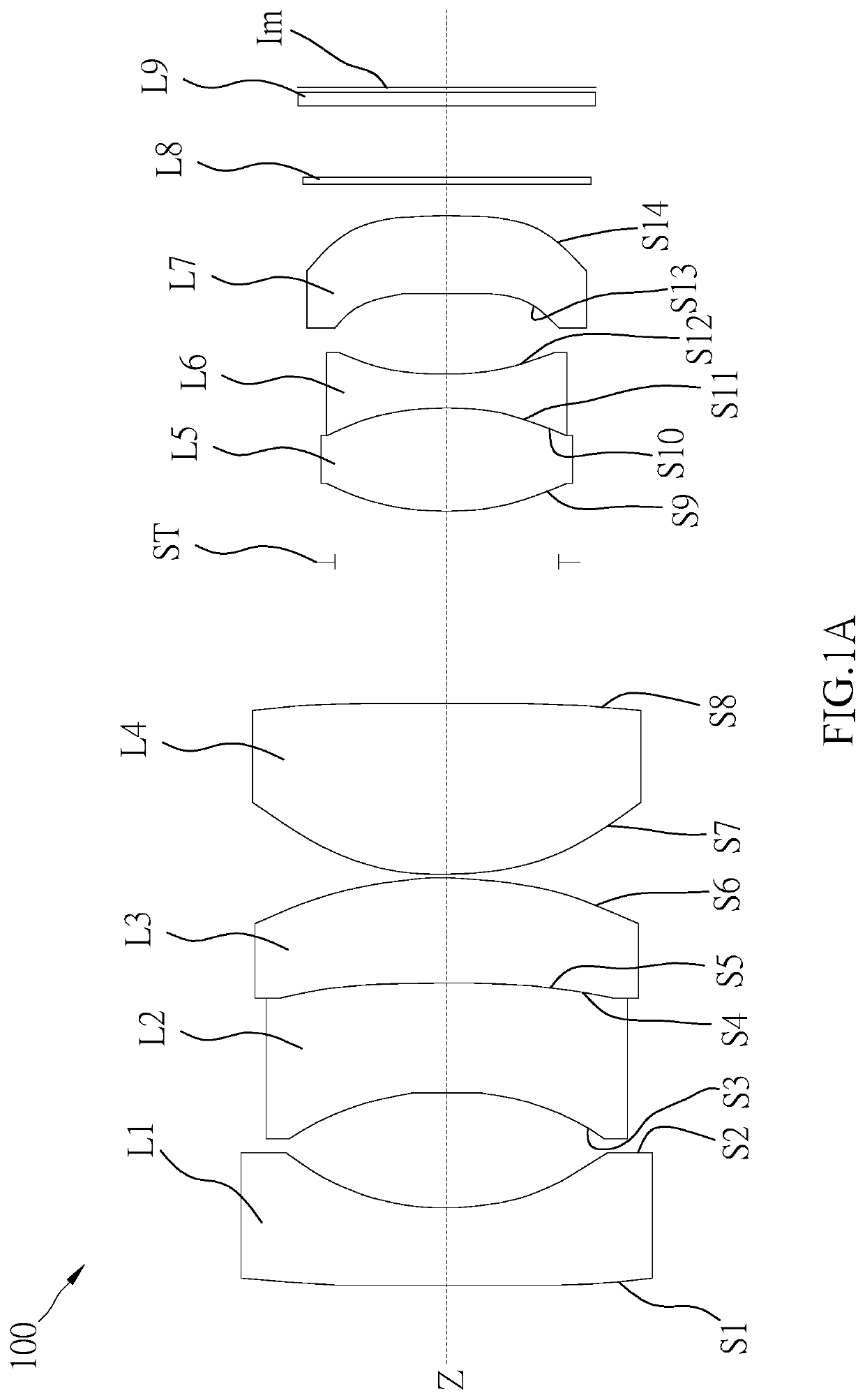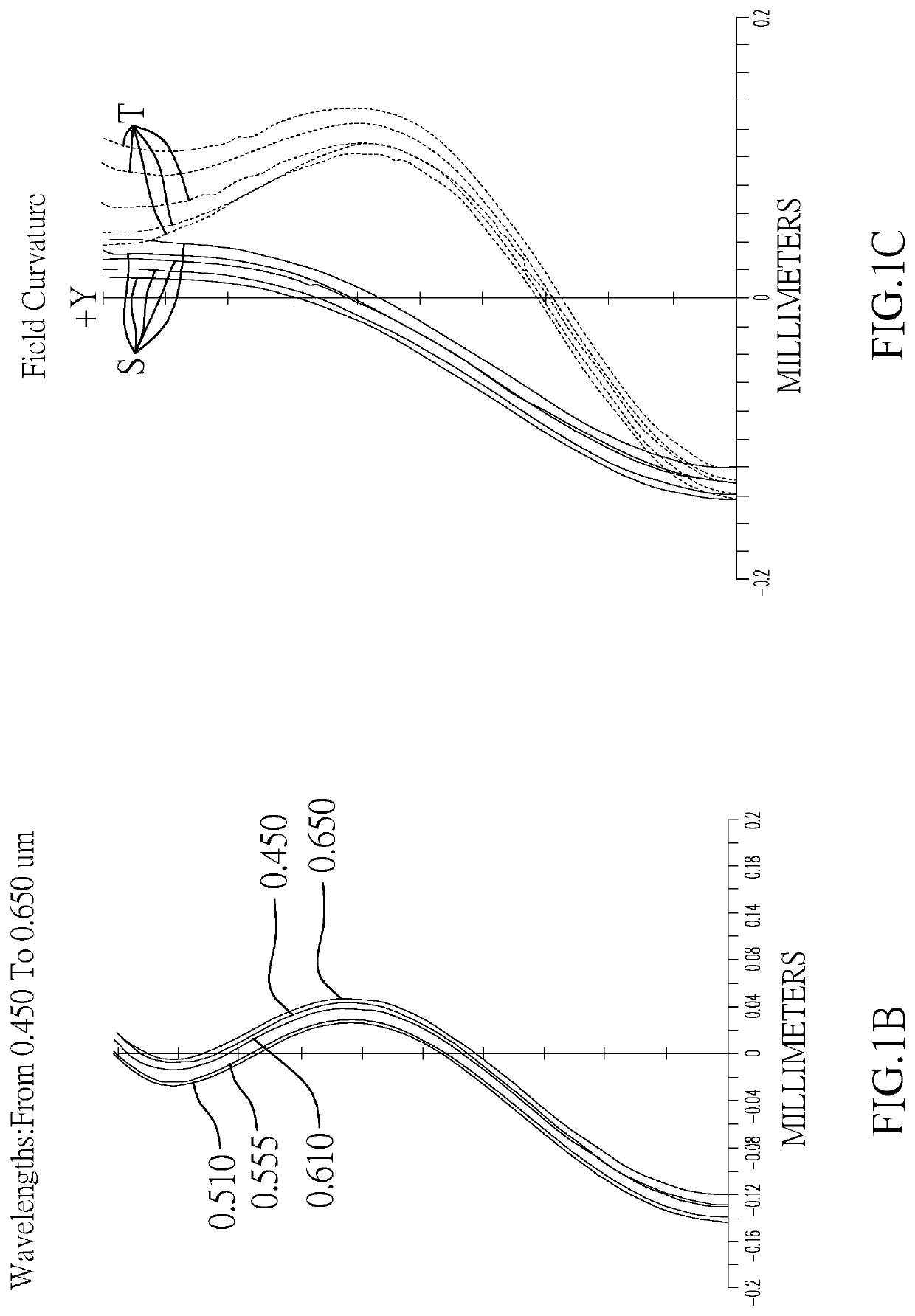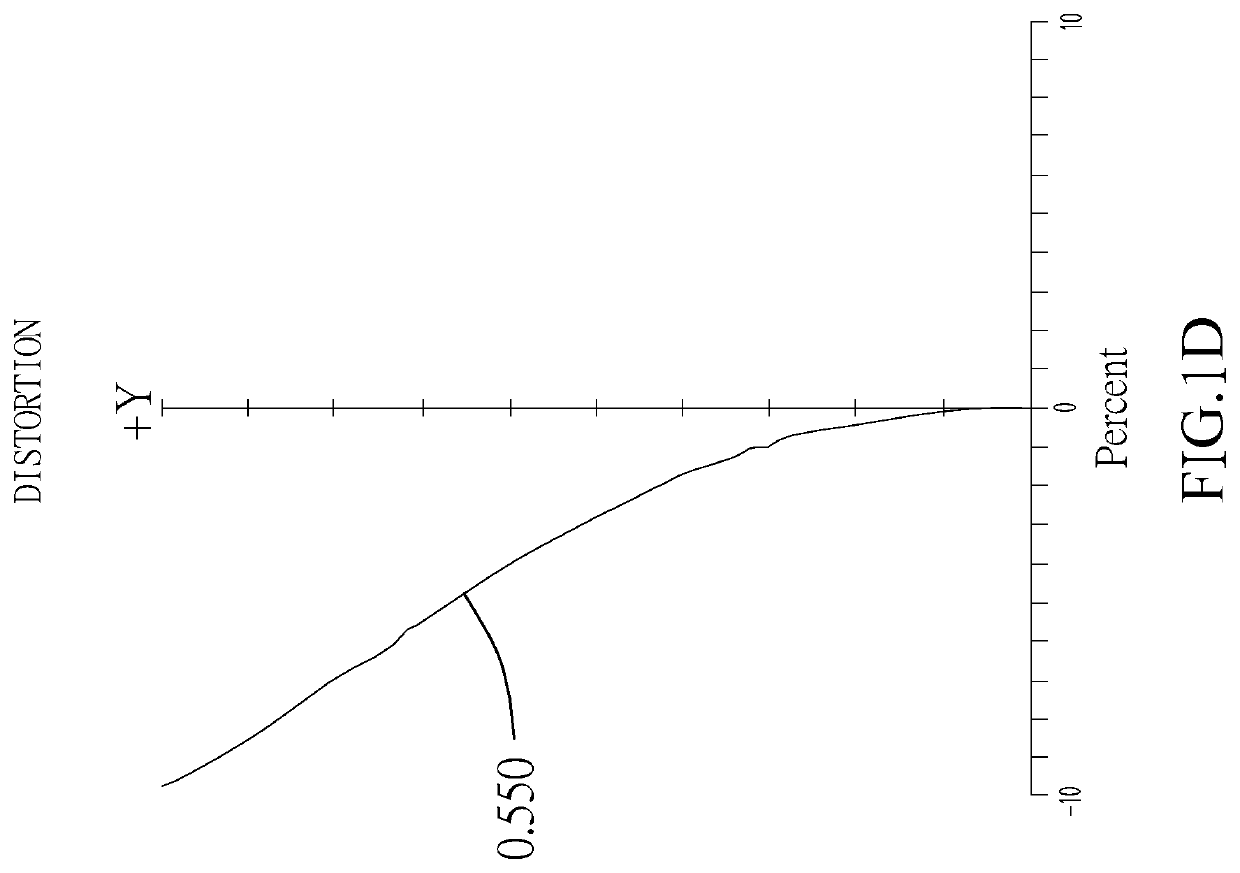Optical imaging lens
- Summary
- Abstract
- Description
- Claims
- Application Information
AI Technical Summary
Benefits of technology
Problems solved by technology
Method used
Image
Examples
first embodiment
[0021]An optical imaging lens 100 of the present invention is illustrated in FIG. 1A, which includes, in order along an optical axis Z from an object side to an image side, a first lens L1, a second lens L2, a third lens L3, a fourth lens L4, a fifth lens L5, a sixth lens L6, and a seventh lens L7.
[0022]The first lens L1 has negative refractive power, wherein an object-side surface S1 of the first lens L1 is a convex surface toward the object side, and an image-side surface S2 thereof is a concave surface toward the image side.
[0023]The second lens L2 and the third lens L3 are adhered together to form a first compound lens, which could effectively improve a chromatic aberration of the optical imaging lens 100 and reduce an aberration of the optical imaging lens 100. In an embodiment, a cemented surface between the second lens L2 and the third lens L3 could be a flat surface or a convex surface toward the image side. Preferably, in the current embodiment, the first compound lens has ...
second embodiment
[0034]An optical imaging lens 200 of the present invention is illustrated in FIG. 2A, which includes, in order along an optical axis Z from an object side to an image side, a first lens L1, a second lens L2, a third lens L3, a fourth lens L4, a fifth lens L5, a sixth lens L6, and a seventh lens L7.
[0035]The first lens L1 has negative refractive power, wherein an object-side surface S1 of the first lens L1 is a convex surface toward the object side, and an image-side surface S2 thereof is a concave surface toward the image side.
[0036]The second lens L2 and the third lens L3 are adhered together to form a first compound lens, which could effectively improve a chromatic aberration of the optical imaging lens 200 and reduce an aberration of the optical imaging lens 200. In an embodiment, a cemented surface between the second lens L2 and the third lens L3 could be a flat surface or a convex surface toward the image side. Preferably, in the current embodiment, the first compound lens has ...
third embodiment
[0047]An optical imaging lens 300 of the present invention is illustrated in FIG. 3A, which includes, in order along an optical axis Z from an object side to an image side, a first lens L1, a second lens L2, a third lens L3, a fourth lens L4, a fifth lens L5, a sixth lens L6, and a seventh lens L7.
[0048]The first lens L1 has negative refractive power, wherein an object-side surface S1 of the first lens L1 is a convex surface toward the object side, and an image-side surface S2 thereof is a concave surface toward the image side.
[0049]The second lens L2 and the third lens L3 are adhered together to form a first compound lens, which could effectively improve a chromatic aberration of the optical imaging lens 300 and reduce an aberration of the optical imaging lens 300. In an embodiment, a cemented surface between the second lens L2 and the third lens L3 could be a flat surface or a convex surface toward the image side. Preferably, in the current embodiment, the first compound lens has ...
PUM
 Login to View More
Login to View More Abstract
Description
Claims
Application Information
 Login to View More
Login to View More - R&D
- Intellectual Property
- Life Sciences
- Materials
- Tech Scout
- Unparalleled Data Quality
- Higher Quality Content
- 60% Fewer Hallucinations
Browse by: Latest US Patents, China's latest patents, Technical Efficacy Thesaurus, Application Domain, Technology Topic, Popular Technical Reports.
© 2025 PatSnap. All rights reserved.Legal|Privacy policy|Modern Slavery Act Transparency Statement|Sitemap|About US| Contact US: help@patsnap.com



